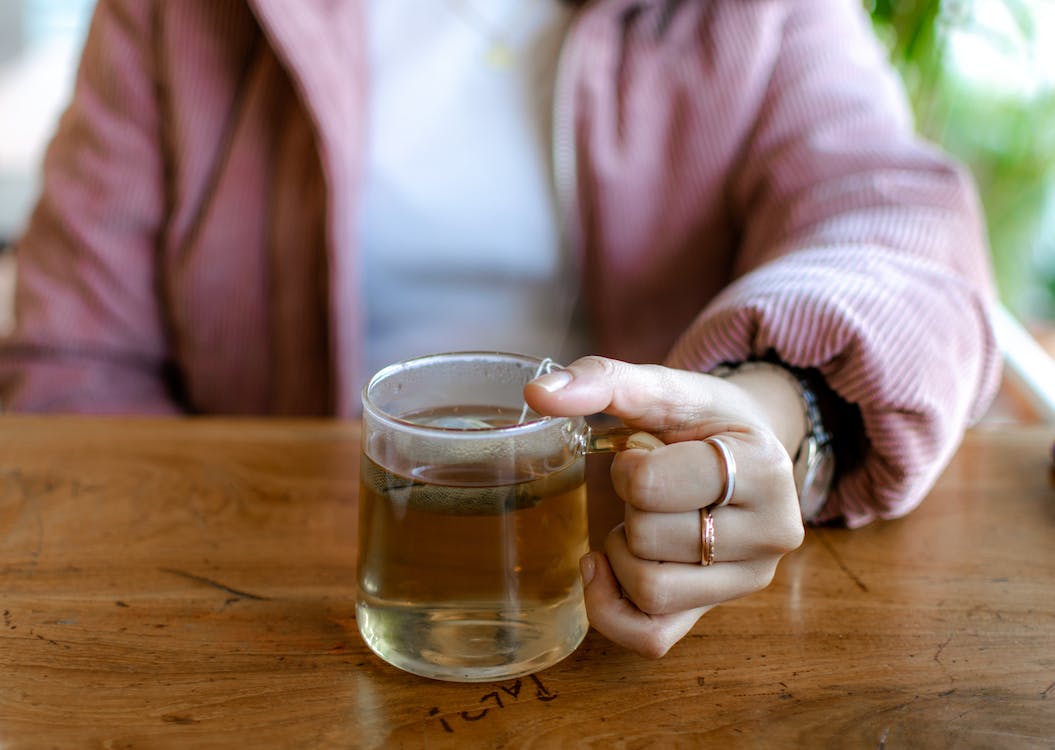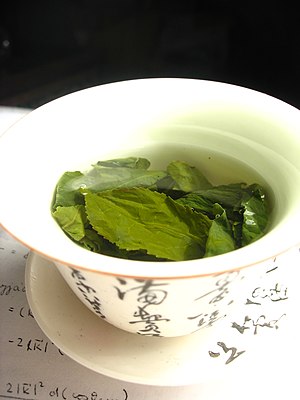You may certainly reheat a mug of water with a bag of tea in it before continuing with your day. But if you know how to make tea properly, you may avoid getting weak mugs of hot, brownish water and instead enjoy strong pots of something pleasant and energizing.
Therefore, take a moment to browse over our article on how to properly make tea if you ever decide to put that pot of coffee down. It can appear complicated at first, but with just one attempt, you will be making tea like a pro—quickly and accurately.
1. Choose and measure out your tea
There are thousands of different types of tea, but they can all roughly be divided into one of five groups:
- White
- Green
- Oolong
- Black
- Dark (the most common dark being Pu-erh from China’s Yunnan Province)
The amount of oxidation that occurs during the processing of the tea leaves is the main distinction between them. The more the leaves are processed, the darker the tea will be.
Measure out your tea once you have made your decision. You will want to explore the different types of tea because everyone has a different preference for tea strength (some like them stronger, some like them lighter). But a decent starting point is one teaspoon of loose tea per cup of water. (Using this ratio, four teaspoons of tea will be needed for a teapot that holds four cups of water.)
Do you use tea bags? The average bag contains roughly 1 teaspoon of tea. If you are creating a pot of tea, use more than one for a single serving.
2. Heat your water
It is important to have the water at the right temperature since burning the tea will occur if the water is too hot. If it is too cold, the tea will not even fully steep.
Various teas require different water temperatures, which further complicates matters.
Green, white, and oolong teas need water that is a little bit colder; black, dark, and herbal teas need it hot. Here is a hint: Use boiling (212°F) water for herbal infusions (tisanes) and dark (Pu-erh) teas.
You should aim for water that is approximately 200°F for making black tea; after it reaches a rolling boil, remove it from the heat and let it settle for 30 to 60 seconds.
For green, white, and oolong teas, bring the water to a boil, turn off the heat, and wait for a few seconds. In this case, you want a tea that is between 158°F and 185°F in temperature.
Finally, wait even longer for any extremely delicate tea—a delicate white or green tea, for example. The ideal water temperature is around 140°F.
3. Pour the water over the tea and steep
The length of time you steep depends on personal choice, much like how much tea you use. Herbal infusions require the longest steeping (5 to 7 minutes); white teas require the shortest. You can get away with 3 minutes for every other tea (black, green, oolong, and dark). At this point, give the tea a taste; if you want it stronger, continue steeping! However, do not leave the tea in the cup or pot unattended for too long; otherwise, it will get tannic and bitter.
4. Let the tea cool slightly before drinking
Letting the tea cool somewhat before you start drinking it will allow you to experience the tea’s subtle and delicate characteristics. Yes, it will stop you from burning your mouth as well.
Tea steep time breakdown
Black tea: 3 to 5 minutes
Black tea typically steeps for three to five minutes. Black teas are often steeped for longer than most other types of tea, which enhances the amount of caffeine present and yields a cup that is black and flavorful. Consider a longer steep if you intend to drink your black tea with milk and sugar.
Green tea: 1 to 2 minutes
Most green teas should be infused for one to two minutes. Given that green tea may quickly become bitter if over-steeped, knowing how long to brew it is crucial. It is always best to err on the side of caution and choose a shorter green tea steep time if you have never made a specific type of green tea before. Specialty green teas like Gyokuro and Kabusecha should infuse in cooler water for a longer amount of time.
White tea: 2 to 3 minutes
White tea typically takes two to three minutes to steep. White tea may be produced using younger buds and tips of the tea plant or older, dried leaves. White teas have a light body and a delicate, mellow flavor due to the minimum oxidation they experience.
Oolong tea: 2 to 3 minutes
Oolong tea typically steeps for two to three minutes. Oolongs are special teas that are partially oxidized, putting them in between black teas and green teas. They are mostly manufactured in China and Taiwan. Oolong teas can be steeped more than once, with nuances in flavor to be relished in each new cup.
Pu-erh tea: 5 minutes
Like black teas, we advise infusing Pu-erh teas for four to five minutes. Pu-erh teas can also be made using the Chinese Gongfu technique, in which tea is progressively infused for numerous brief steeps. The maturing process that these full-bodied, rich teas go through prevents them from becoming as harsh.
Purple tea: 3 minutes
Purple teas should be infused for two to three minutes. The same plant from which black, green, oolong and other forms of tea are made, Camellia sinensis, produces purple tea from its leaves. However, unlike previous varieties of tea, this novel varietal’s leaves are purple rather than green. Originally found growing in the wild in the Assam region of India, the tea is currently commercially farmed in Kenya, Africa.
Herbal tea: 5+ minutes
Five minutes or longer is the suggested steeping time for herbal tea. Herbal teas should be brewed in boiling water, just like black tea. Herbal teas typically do not go bitter if you steep them longer than most caffeinated teas do. Some herbal teas can be steeped longer for a more flavored cup, especially those that contain strong spices like ginger and turmeric.
Rooibos tea: 5+ minutes
Teas made from rooibos can be steeped for up to five minutes and a little longer without becoming bitter. If you want to avoid caffeine, rooibos teas, which are native to South Africa, are a pleasant, full-bodied substitute for black tea. They are also packed with antioxidants.
Why steep time matters
Your tea will become stronger the longer you steep it. While this can occasionally be advantageous, as with some herbal teas or hearty, robust black teas, over-infusing your tea can also produce an unpleasant bitterness. This is especially true for teas that are more delicate, like green tea, which, when steeped for an excessive amount of time, soon turns bitter.
A cup of tea that has been brewed for too little time will be weaker and mellower. Even while some individuals like their teas on the milder side, infusing your tea for too little time can keep you from tasting the entire range of flavors. Instead, you will get a tea that is not as nice as it could be because it was watered down and made weaker.
There is no hard and fast rule for how long to steep your tea because different teas respond better to various steep lengths. While a delicate green tea may benefit from only a one- to two-minute steep time, a robust black tea that you want to have with milk and sugar may benefit from a five-minute steep time.
Conclusion
One of the most crucial factors to master when making a flavorful, well-balanced cup of tea is the steep duration. If you let the tea steep for too long, the result will be an unpleasant cup of strong, bitter tea. A cup of tea that has been brewed for too little time will be weak and flavorless. Even more challenging is the fact that various teas require various steeping durations to bring forth their best flavors. Having the perfect duration of steeping your tea will result in a perfect pot of tea.


